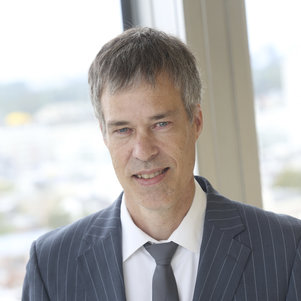Risk analysis of extreme undesirable events
How safe is safe enough?
How can we provide the Netherlands with the best possible protection from disasters, such as floods? And: how safe is safe enough? The Safety Science Research Group of the faculty Technology, Policy and Management of the TU Delft is calling for a uniform risk analysis of extreme events, which enables the benchmarking of risks between the different domains.
The demand for safety decision models is greater than ever. And there are also more risks to manage than ever before - for example, in the water sector, the chemicals industry, the world of internet, logistics and transport, electricity networks & infrastructures, the construction sector and the healthcare sector. This involves important safety issues, ranging from extreme water levels and temperatures to the risk of explosions, the risk of cyber attacks, medical mistakes and building collapses. There is a need for risk analyses of natural events (earthquakes, forest fires, etc.) on the one hand, and of man-made hazards (traffic accidents, chemical disasters, etc.) and intentional hazards (theft, vandalism, terrorism) on the other.
Uniform approach
In a risk analysis risks are quantified by determining the probability of a threat and the consequences thereof, so that the correct measures can then be determined.
The faculty of Technology, Policy and Management is currently working on a harmonised approach to risk analysis. Chances of undesirable events in the different safety domains are modelled in the same way and the consequences of undesirable events (fatalities, injuries, direct and indirect economic damage and non-material damage) are also modelled consistently. Safety measures then also need to be studied within the same framework in order to determine the extent to which the risks and consequences can be reduced. The advantage is that this is a very generic approach that enables the comparison of risks between the different domains.
The research is progressing steadily, but still faces many challenges. There are still major steps to be taken, particularly in domains such as public safety, in which the human factor plays a crucial role - for example, the identification and quantification of malicious acts by humans. Furthermore, new technological developments make it a 'never-ending' process. The development of nanotechnology, for example, and innovations such as self-healing materials and extreme adhesives raise new safety issues. At the same time, TPM is keeping a close eye on the big data developments. Drones, mobile phones and – in the near future – Google Glass gather immense amounts of data. The Safety Science Research Group is researching methods for using this data to further optimise safety.
Evidence based
TPM’s uniform risk analysis facilitates an evidence-based or transparent decision-making process. This has great social importance. It enables taxpayers' money in the Netherlands to be spent on the various safety domains in the most responsible manner possible. However, large and small businesses can also benefit from such mathematical models for the safety of their products and processes. This gives them a better understanding of the safety measures on which to spend their money.
Multidisciplinary: the TU Delft Safety and Security Institute
The TU Delft Safety and Security Institute was launched in the summer of 2013, under the leadership of the TU Delft Safety Science Research Group. In the institute six TU Delft faculties (TPM and five other faculties) work together on safety issues. Broad research themes are currently being set up for public safety, public security and security in the private sector. The institute hopes its multidisciplinary approach will help attract research funding, for example from the European financing programme Horizon 2020.

Pieter van Gelder
Head of TLO group
| Read more |
In safe hands with TPM |
| The TU Delft safety group attracts worldwide attention. There is a good reason for the group being incorporated in the Faculty of Technology, Policy and Management (TPM). Although each faculty is involved in the safety of its own technical domains, safety is also a cross-faculty issue. The generic study of safety from a helicopter view fits perfectly with TPM, which is known for its multi-disciplinary socio-technical approach. |
